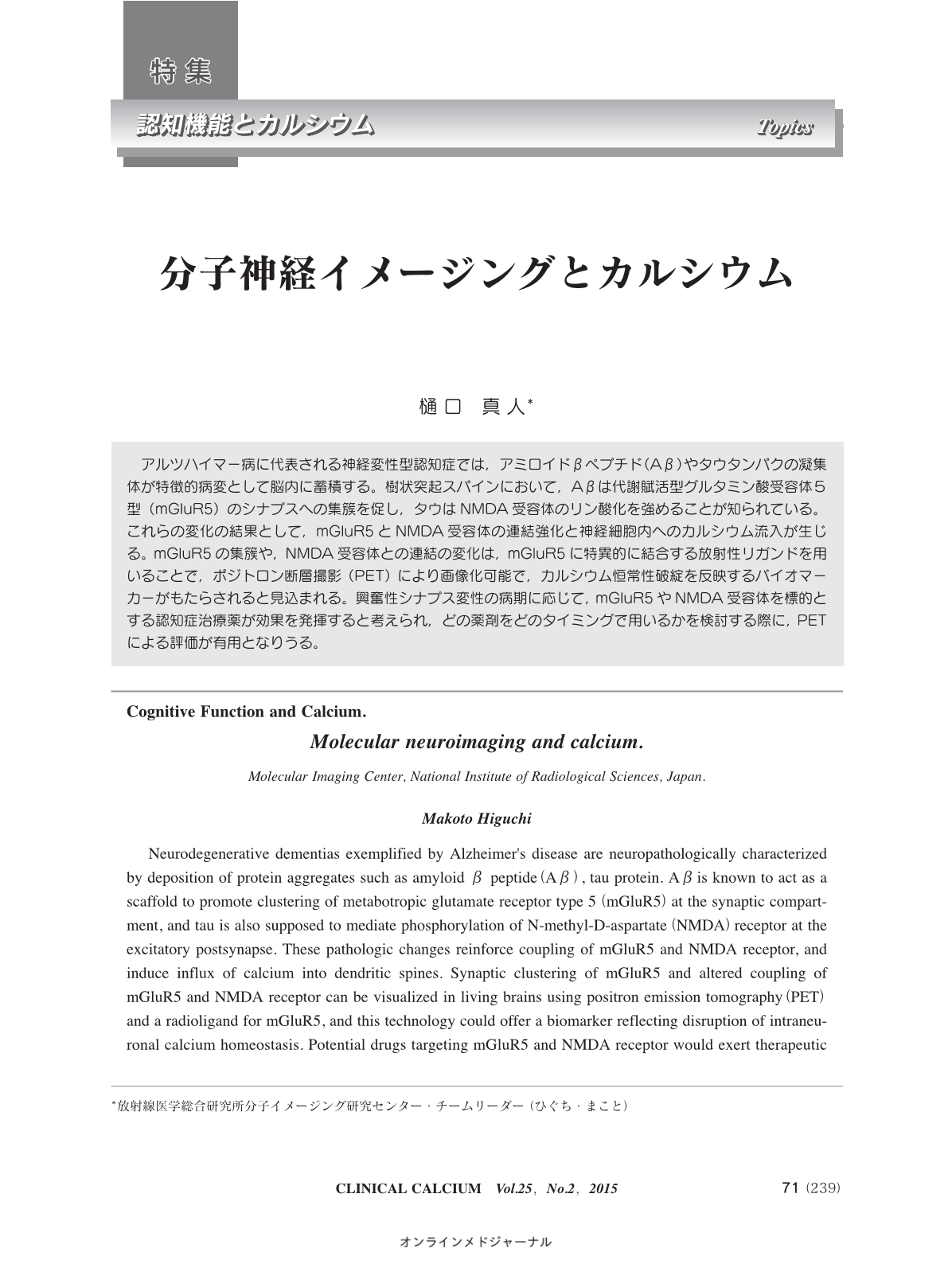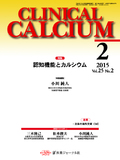Japanese
English
- 有料閲覧
- Abstract 文献概要
- 1ページ目 Look Inside
- 参考文献 Reference
アルツハイマー病に代表される神経変性型認知症では,アミロイドβペプチド(Aβ)やタウタンパクの凝集体が特徴的病変として脳内に蓄積する。樹状突起スパインにおいて,Aβは代謝賦活型グルタミン酸受容体5型(mGluR5)のシナプスへの集簇を促し,タウはNMDA受容体のリン酸化を強めることが知られている。これらの変化の結果として,mGluR5とNMDA受容体の連結強化と神経細胞内へのカルシウム流入が生じる。mGluR5の集簇や,NMDA受容体との連結の変化は,mGluR5に特異的に結合する放射性リガンドを用いることで,ポジトロン断層撮影(PET)により画像化可能で,カルシウム恒常性破綻を反映するバイオマーカーがもたらされると見込まれる。興奮性シナプス変性の病期に応じて,mGluR5やNMDA受容体を標的とする認知症治療薬が効果を発揮すると考えられ,どの薬剤をどのタイミングで用いるかを検討する際に,PETによる評価が有用となりうる。
Neurodegenerative dementias exemplified by Alzheimer's disease are neuropathologically characterized by deposition of protein aggregates such as amyloid β peptide(Aβ), tau protein. Aβ is known to act as a scaffold to promote clustering of metabotropic glutamate receptor type 5(mGluR5)at the synaptic compartment, and tau is also supposed to mediate phosphorylation of N-methyl-D-aspartate(NMDA)receptor at the excitatory postsynapse. These pathologic changes reinforce coupling of mGluR5 and NMDA receptor, and induce influx of calcium into dendritic spines. Synaptic clustering of mGluR5 and altered coupling of mGluR5 and NMDA receptor can be visualized in living brains using positron emission tomography(PET)and a radioligand for mGluR5, and this technology could offer a biomarker reflecting disruption of intraneuronal calcium homeostasis. Potential drugs targeting mGluR5 and NMDA receptor would exert therapeutic efficacies against dementing illnesses in a manner dependent on pathogenetic stages, and PET imaging of mGluR5 and related components would help to determine an optimal time point to initiate treatment with each drug on a personalized basis.



